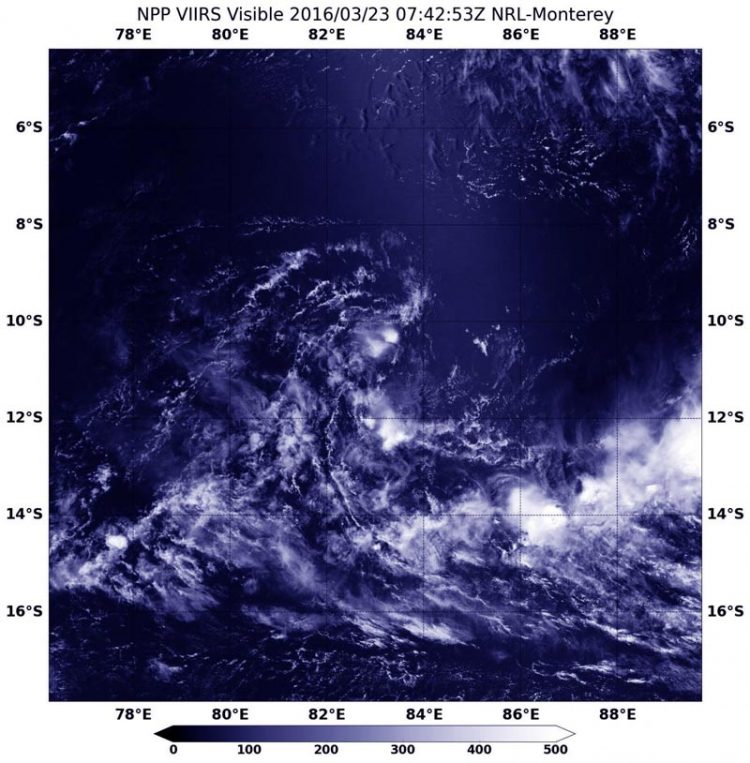Suomi NPP satellite spots ex-Tropical Cyclone Emeraude's remnants

On March 24 at 07:42 UTC (3:42 a.m. EDT), the VIIRS instrument aboard NASA-NOAA's Suomi NPP Credits: NASA Goddard Rapid Response/NOAA
On Mar. 24 at 07:42 UTC (3:42 a.m. EDT) the Visible Infrared Imaging Radiometer Suite (VIIRS) instrument aboard NASA-NOAA's Suomi NPP satellite captured a visible image of clouds associated with the remnant low pressure area. The poorly-defined center circulation was barely distinguishable in the imagery, although there were flaring thunderstorms occurring southwest of the center.
VIIRS collects visible and infrared imagery and global observations of land, atmosphere, cryosphere and oceans.
At 1800 UTC (2 p.m. EDT), the remnants of Emeraude were centered near 11.0 degrees south latitude and 85.9 degrees east longitude, about 650 nautical miles (748 miles/1,204 km) west of Cocos Island.
Maximum sustained surface winds were estimated at 20 to 25 knots (23.0 to 28.7 mph/37.0 to 46.3 kph) and the minimum sea level pressure was estimated to be near 1005 millibars.
The Joint Typhoon Warning Center noted that “upper level environment remains poor with weak divergence and strong vertical wind shear between 25 to 30 knots (28.7 to 34.5 mph/46.3 to 55.5 kph). Development is not expected over the next 24 to 48 hours, however, some dynamic models re-develop the system beyond two days.”
Media Contact
All latest news from the category: Earth Sciences
Earth Sciences (also referred to as Geosciences), which deals with basic issues surrounding our planet, plays a vital role in the area of energy and raw materials supply.
Earth Sciences comprises subjects such as geology, geography, geological informatics, paleontology, mineralogy, petrography, crystallography, geophysics, geodesy, glaciology, cartography, photogrammetry, meteorology and seismology, early-warning systems, earthquake research and polar research.
Newest articles

Superradiant atoms could push the boundaries of how precisely time can be measured
Superradiant atoms can help us measure time more precisely than ever. In a new study, researchers from the University of Copenhagen present a new method for measuring the time interval,…

Ion thermoelectric conversion devices for near room temperature
The electrode sheet of the thermoelectric device consists of ionic hydrogel, which is sandwiched between the electrodes to form, and the Prussian blue on the electrode undergoes a redox reaction…

Zap Energy achieves 37-million-degree temperatures in a compact device
New publication reports record electron temperatures for a small-scale, sheared-flow-stabilized Z-pinch fusion device. In the nine decades since humans first produced fusion reactions, only a few fusion technologies have demonstrated…





















